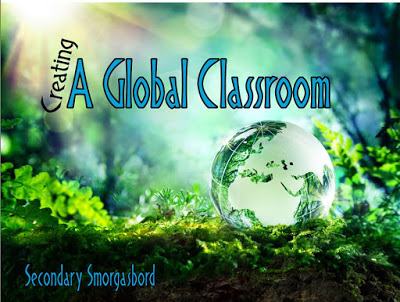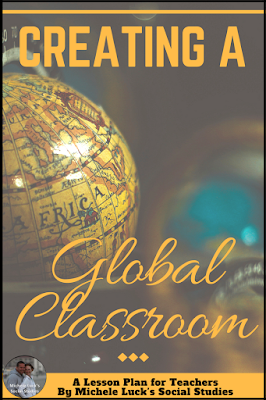American students are often taught the Geography of the world, American History, and even World History from a bubble perspective. We see things through very American eyes with limited understanding of cultural differences and their impact on the world events that eventually affect us all. Teaching students about these cultural differences, and how to live in a world where we can appreciate difference is a task we must take on in the Social Studies classroom. We must work toward Creating a Global Classroom.

Traveling Europe this summer taught me so much about my own limits in understanding of cultural differences. I experienced so many new things by being willing to step outside of my own American shell, and I was able to better understand why some Europeans act or react as they do. More importantly, I was able to see their perspective on Americans. While we see ourselves as the most advanced, literate, and knowledgeable in the world, others see us quite differently, and that can lead to so many problems for us in the ever-changing global world.
That brings me back to the Social Studies classroom and how we, as Social Studies teachers, can change our students’ limited knowledge on the world and what it will be as we move toward the future.
- Always teach multiple perspectives. While these lessons may seem time-wasting to some, it is vitally important that students understand there are ALWAYS multiple perspectives for every event.
- Encourage students to ATTEMPT to walk in others’ shoes. Stress that this task can never truly be done, but the challenge is the lesson.
- Allow students to investigate the GOOD and the BAD in our world. Play the devil’s advocate in situations, and permit your students the freedom to express their anger and frustration with what they see as wrong in the world.
- Introduce world news, POSITIVE and NEGATIVE, to students on a regular basis. Use reliable sources to examine the news in ways that will help students see the impact of the events on local and international levels.
- Teach EMPATHY. Our students will never know the poverty of those in other parts of the world. We can’t expect them to understand what it is like to live without clean water or to walk without shoes through the desert, but we can teach them to feel for others who must live in those conditions. Then it will be easier for them to UNDERSTAND why those others act the ways they do in major world events.
Teaching Social Studies is not about teaching facts and figures. It’s about helping our students become better world citizens. Start doing that today, because tomorrow is coming very soon!

Thank you so much to Pam from Desktop Learning Adventures and Darlene Anne from ELA Buffet for organizing these wonderful Secondary Smorgasbord topics and posts! Be sure to read all of the others this month to explore more on Creating a Global Classroom!

Happy Teaching!